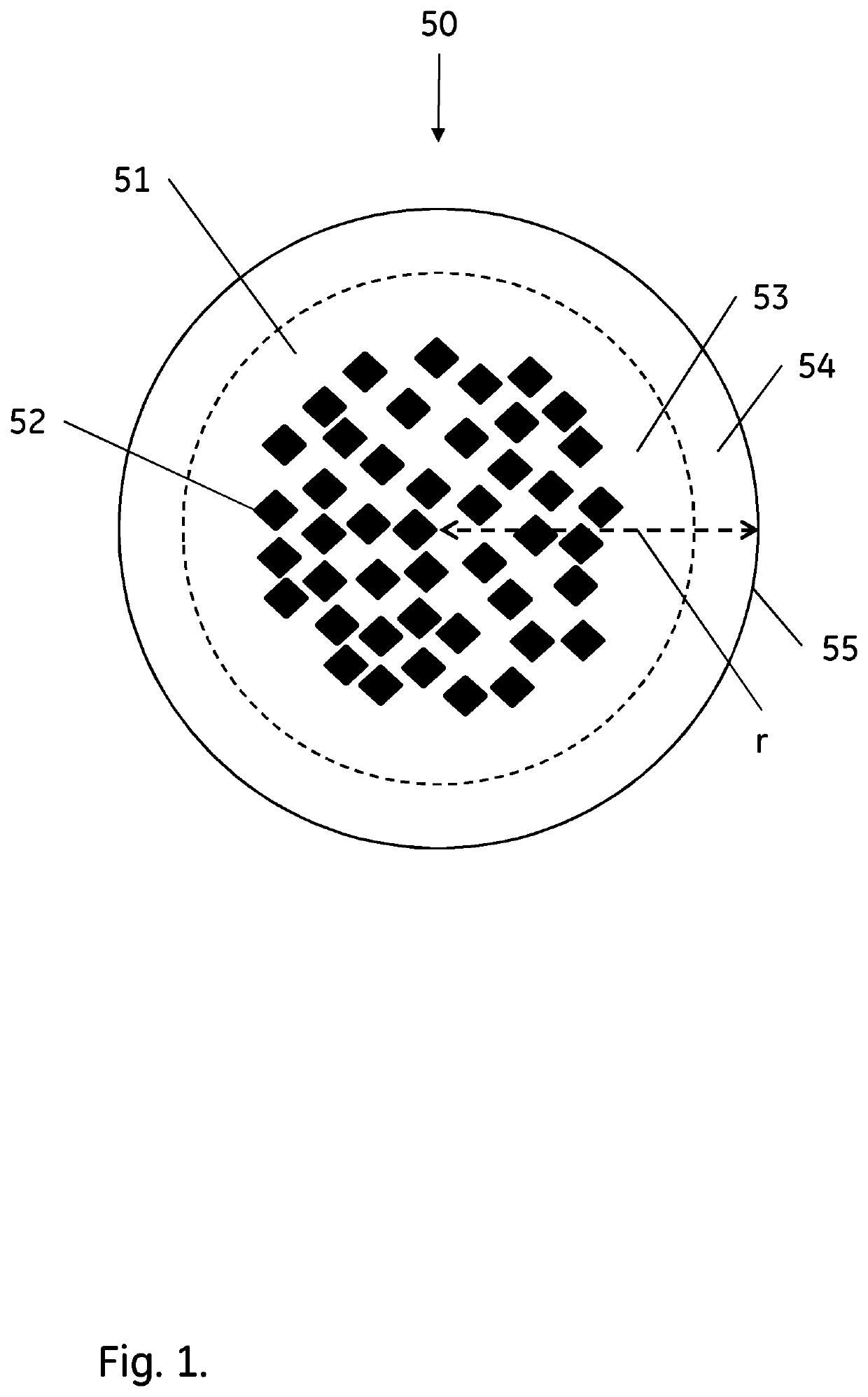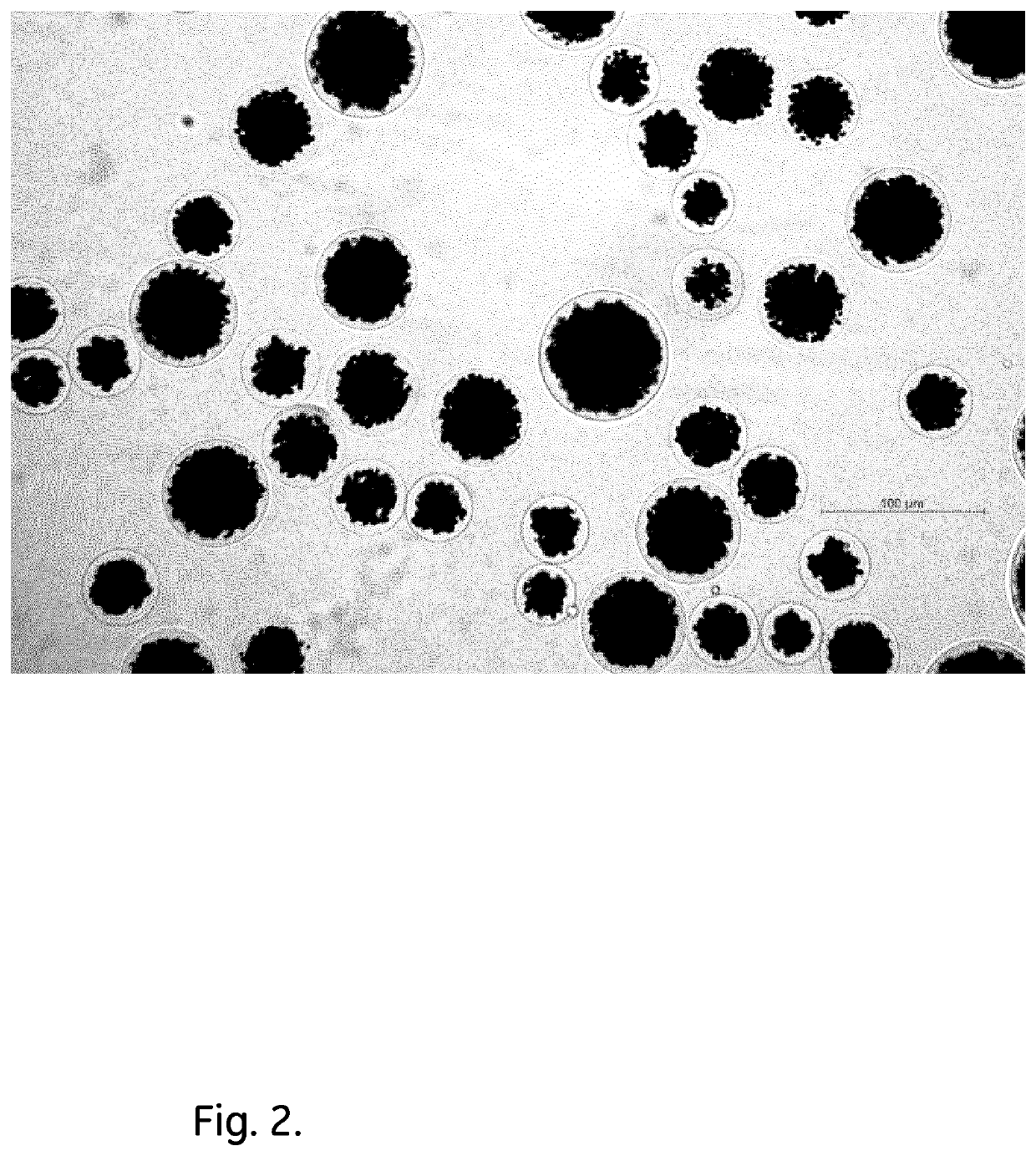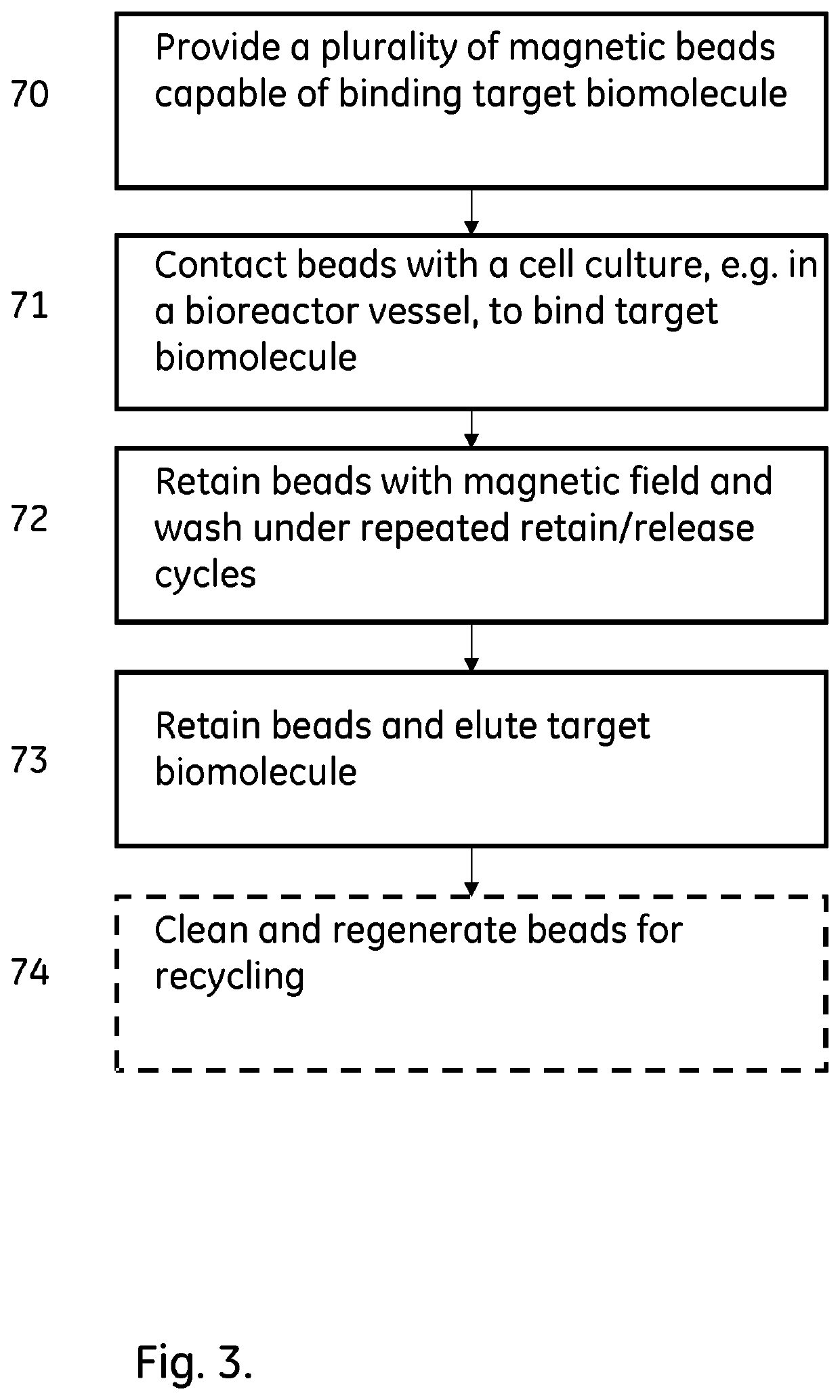Magnetic Immunoglobulin-Binding Particles
a technology of immunoglobulin and magnetization beads, which is applied in the field of magnetization resins for the separation of immunoglobulins, can solve the problems that magnetized beads are not normally used for large-scale separation of biopharmaceuticals, and achieve the effect of high binding strength and high binding capacity
- Summary
- Abstract
- Description
- Claims
- Application Information
AI Technical Summary
Benefits of technology
Problems solved by technology
Method used
Image
Examples
example 1
Magnetic Agarose Beads
[0084]A hot (74° C.) dispersion of 80 g magnetite particles in 836 g aqueous agarose solution (800 g water and 36 g agarose) was emulsified in a hot (60° C.) solution of 50 g ethyl cellulose emulsifier in 1120 ml toluene, using an overhead agitator in a thermostated cylindrical glass vessel. Samples were removed during the emulsification for particle size measurement using a Malvern Mastersizer laser diffraction instrument. The agitation was continued until a target volume-weighted median droplet diameter of 62 micrometers had been reached. At that point the agitator rpm was decreased and the emulsion was cooled to 22° C., in order to obtain solid agarose gel beads with embedded magnetite particles. The beads were then sedimentation washed 5 times with 95% ethanol and 5 times with distilled water. The magnetite powder used was obtained from Aldrich (article #31,006-9) and had a volume-weighted median particle diameter (d50,v) of 1.5 micrometers, with 10 and 90%...
PUM
 Login to View More
Login to View More Abstract
Description
Claims
Application Information
 Login to View More
Login to View More - R&D
- Intellectual Property
- Life Sciences
- Materials
- Tech Scout
- Unparalleled Data Quality
- Higher Quality Content
- 60% Fewer Hallucinations
Browse by: Latest US Patents, China's latest patents, Technical Efficacy Thesaurus, Application Domain, Technology Topic, Popular Technical Reports.
© 2025 PatSnap. All rights reserved.Legal|Privacy policy|Modern Slavery Act Transparency Statement|Sitemap|About US| Contact US: help@patsnap.com



